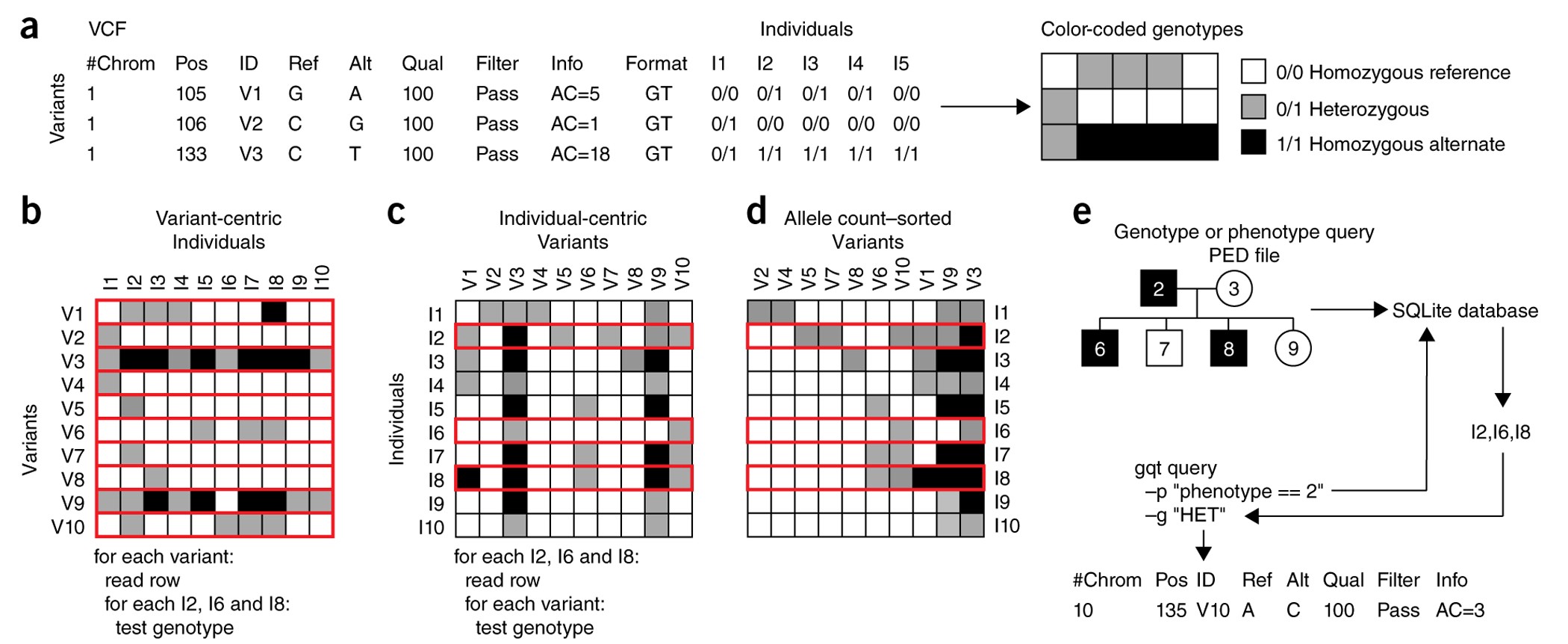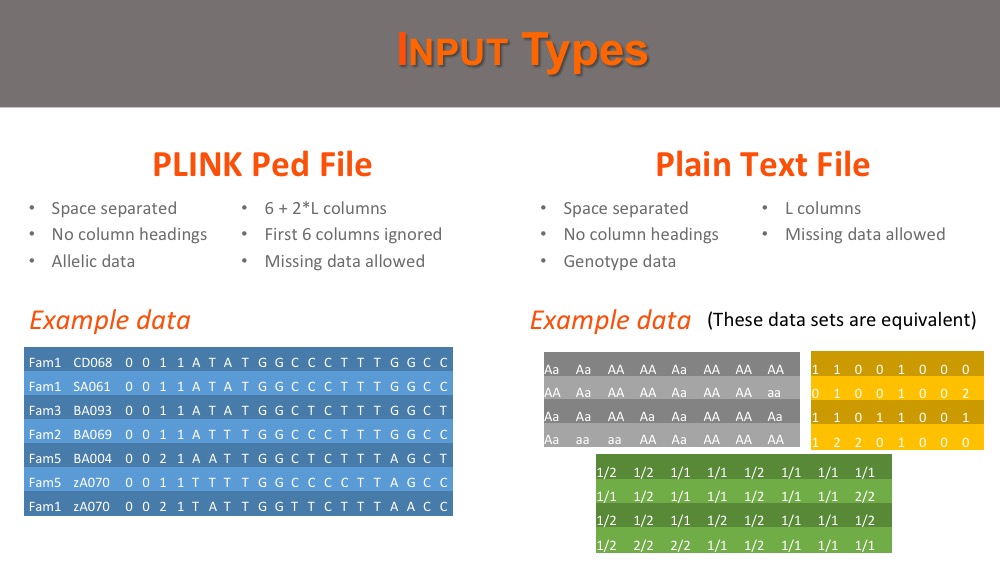Understanding PLINK VCF and PED Formats for Non-Human Applications
What Is PLINK VCF?
PLINK Variant Call Format (VCF) is a standardized file format specifically designed for storing genetic variant information. It encapsulates essential details about genetic variants, including single nucleotide polymorphisms (SNPs), insertions, deletions, and their respective chromosome locations. Widely utilized in genome-wide association studies (GWAS) and various genetic research endeavors, PLINK VCF files allow researchers to manage large-scale genotype data with efficiency.
Key Components of PLINK VCF:
- Header Information: This includes metadata related to the file, encompassing reference genome specifications and sample-specific details.
- Variant Details: The format provides comprehensive data on genetic variants, including their chromosome positions, reference and alternate alleles, and genotypes for each individual sample.
What Is PLINK PED Format for Non-Human Studies?
The PLINK PED (Pedigree) format is commonly employed to store genotype data, particularly when associated with a MAP file that outlines genetic markers. This structured format is designed to provide genotype data for multiple individuals across various genetic markers, making it especially beneficial for non-human genetic investigations.
Key Features of PLINK PED Format:
- Family and Individual Information: The format contains essential data such as family IDs, individual IDs, and sex, which are critical for conducting pedigree-based analyses.
- Genotype Information: Organized in a matrix format, this data presents genotypes for diverse genetic markers, with rows representing individuals and columns corresponding to genetic markers.

The Importance of Transforming PLINK VCF to PED Format for Non-Human Research
Why Is the Conversion from PLINK VCF to PED Essential?
Transforming PLINK VCF data into PED format serves several vital purposes, particularly in the context of genetic research:
- Tool Compatibility: Numerous genetic analysis tools and software applications are optimized for working with the PED format, making this conversion an essential step for specific analyses.
- Integration of Datasets: In some cases, merging datasets from different origins or studies necessitates format uniformity, which can be accomplished through conversion.
- Preprocessing Needs: Certain quality control or preprocessing procedures require data to be in PED format, particularly when engaging in thorough genetic analyses.
Step-by-Step Instructions for Converting PLINK VCF to PED Format for Non-Human Data
Preparing Your Environment
Before embarking on the conversion process, it’s crucial to have the appropriate tools and software installed. Here’s what you will need:
- PLINK: A robust tool utilized in genetic data analysis that supports various formats, including both VCF and PED.
- VCF Tools: A utility designed for preprocessing and manipulating VCF files to ensure your data is ready for conversion.
Installing the Necessary Software
You can acquire PLINK from its official website, while VCF Tools are available for download from their GitHub repository or through a package manager. These tools are vital for ensuring a smooth conversion between formats.
Converting PLINK VCF to PED Format Using PLINK
Once your software setup is complete, follow these detailed steps to convert your VCF file into PED format:
1. Prepare Your VCF File
Ensure that your VCF file is correctly formatted and contains all necessary headers and genetic variant information. It should encompass all essential elements such as SNPs, chromosome positions, and genotype data.
2. Execute the Conversion Command
Utilize PLINK to initiate the conversion process. The following command will read your VCF file and convert it into the PED format:
plink --vcf your_file.vcf --recode --out your_output
This command instructs PLINK to process the VCF file (your_file.vcf) and save the resulting output as both a PED file (your_output.ped) and a MAP file (your_output.map).
Verifying Your Conversion Output
After the conversion process is complete, it’s crucial to review the output files. The PED file should encompass all genotype data, while the MAP file should present a detailed enumeration of genetic markers. Ensuring data integrity at this stage is essential for the accuracy of subsequent analyses.
Applications of PLINK PED Format in Non-Human Genetic Research
Investigating Genetic Associations in Non-Human Species
The PED format is extensively utilized in genetic association studies, which explore the relationships between genetic variants and phenotypes. By converting VCF to PED, researchers can leverage various analytical tools specifically designed for pedigree-based datasets, thus gaining deeper insights into genetic traits across non-human organisms.
Improving Quality Control and Preprocessing
In many genetic analyses, the PED format facilitates crucial preprocessing and quality control tasks. These processes may include genotype filtering, imputation of missing data, and dataset merging, all of which are critical for ensuring high-quality research outcomes.
Utilizing PLINK PED in Non-Human Genetics
While the PLINK PED format is often linked to human genetic studies, it plays a significant role in non-human research as well. Whether researchers are examining animal genomes for breeding programs or investigating genetic diversity in plant species, the PED format is indispensable for conducting thorough genetic trait analyses.
Challenges and Considerations During the Conversion of PLINK VCF to PED Format
Navigating Large Datasets and Complexity
The conversion process can become intricate, particularly when dealing with large VCF files. It’s essential to confirm that sufficient computational resources are available, as converting extensive datasets can be resource-intensive and time-consuming.
Ensuring Data Integrity Throughout the Conversion
Maintaining data integrity during the conversion process is vital. It’s imperative to carefully check for errors or data loss and confirm that the output accurately reflects the original VCF file. Attention to detail during verification is essential to avoid inaccuracies in downstream analyses.
Evaluating Compatibility Among Analysis Tools
Not all genetic analysis tools function seamlessly with PED files; some have specific requirements. Ensure that the software intended for use supports the PED format before proceeding with further analysis.
Recognizing the Importance of PLINK VCF in Genetic Research
PLINK VCF (Variant Call Format) is fundamental for storing and managing substantial volumes of genetic data, particularly in genome-wide association studies (GWAS). This format allows for the efficient analysis of genetic variations, providing detailed accounts of nucleotide alterations such as SNPs, insertions, and deletions. The extensive metadata contained within the VCF file renders it invaluable for both human and non-human genetic studies, offering insights into genetic diversity, evolutionary processes, and traits associated with diseases.
PLINK PED: An Essential Format for Pedigree-Based Genetic Analysis
The PLINK PED format is tailored for pedigree-based genetic analyses, making it ideal for investigating familial relationships and inheritance patterns within non-human species. By structuring data in a matrix format, the PED file enables researchers to visualize genotype information across individuals and genetic markers. This is particularly advantageous for examining hereditary traits, genetic mutations, and species conservation, all of which are critical in non-human genetics.
Advantages of Utilizing PLINK PED for Non-Human Genetics Research
Transforming PLINK VCF files to PED format presents numerous benefits for non-human genetics research. The PED format accommodates both genotypic and family structure data, enabling the exploration of inheritance patterns and genetic variation across generations. This capability is especially advantageous in breeding programs, genetic diversity investigations, and studies within evolutionary biology. The ability to map genetic markers to phenotypic traits in non-human species can lead to significant advancements in understanding biodiversity.
Utilizing VCF Tools for Preprocessing Genetic Data
VCF Tools are indispensable for preparing VCF files prior to their conversion to PED format. These tools empower researchers to filter out low-quality variants, execute genotype calling, and merge datasets from diverse origins. Preprocessing the VCF file ensures the data is clean and primed for conversion, which is essential for accurate downstream analyses. VCF Tools also aid in managing the complexity of large genetic datasets by streamlining the data into usable formats.
The Role of PLINK Software in Data Conversion and Analysis
PLINK is a powerful genetic analysis tool that facilitates the transition of VCF files to PED format. With its extensive functionality, PLINK not only supports data conversion but also conducts various statistical analyses, including association studies, quality control measures, and population stratification. The versatility of PLINK renders it invaluable for researchers working with both human and non-human genetic data, simplifying complex analyses and enhancing data interpretation.
Ensuring Data Integrity Following Conversion
Confirming data integrity after converting VCF to PED is a crucial step in the genetic analysis workflow. Researchers must verify that all genotype data and genetic markers are accurately transferred and formatted. Any discrepancies or errors during the conversion can undermine the validity of the analysis. Tools such as PLINK’s summary statistics feature can be utilized to cross-check the data and ensure that the PED file faithfully represents the original VCF information.
Applications of PLINK PED Format in Animal Breeding Programs
The PLINK PED format finds widespread use in animal breeding initiatives, where comprehending genetic traits is essential for selective breeding efforts. By analyzing pedigree information alongside genetic markers, researchers can pinpoint desirable traits such as disease resistance, accelerated growth rates, or enhanced yield in livestock. This analytical approach enables breeders to make informed decisions, improving the overall genetic quality and productivity of animal populations.
Examining Genetic Diversity in Plant Species Through PED Format
In the realm of plant genetics, converting VCF files to PED format opens avenues for studying genetic diversity across different species. Researchers can examine allele frequencies, conduct association studies, and assess the impact of genetic variation on phenotypic traits. The structured nature of the PED format allows for efficient handling of extensive datasets, facilitating comprehensive analyses that contribute to our understanding of plant evolution and adaptation.

Conclusion: Embracing the Power of VCF to PED Conversion
The conversion of PLINK VCF files to PED format is a crucial process in genetic research, particularly for non-human applications. By facilitating compatibility with various analytical tools, enhancing data integration, and supporting effective preprocessing, this conversion empowers researchers to delve deeper into genetic studies. As genetic analysis continues to evolve, the significance of formats such as VCF and PED in understanding genetic variation, inheritance patterns, and species conservation remains paramount. By following the outlined steps and considerations, researchers can effectively harness the potential of these formats to advance their understanding of genetics across diverse non-human organisms.


